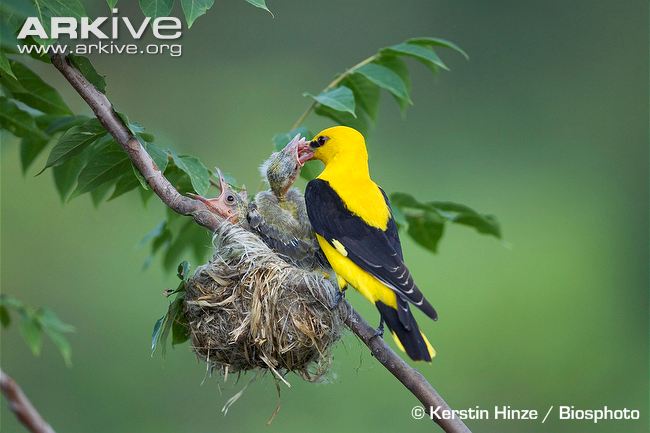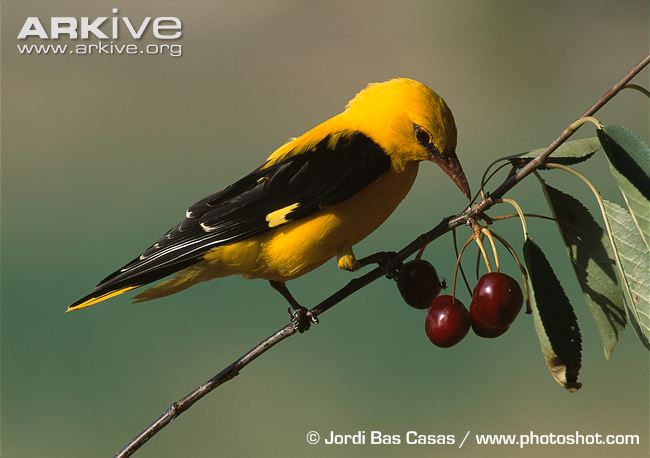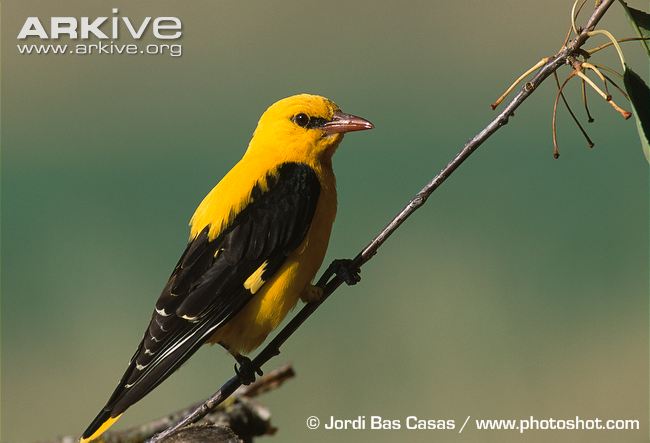
Oriolus oriolus
TAXONOMY
Oriolus oriolus Linnaeus, 1758, “in Europe, Asia” = Sweden.
Two subspecies, one in Europe to west Asia and the other in
Central Asia, differing in size, proportions, and black stripe
through eye.
OTHER COMMON NAMES
English: Golden oriole, oriole; French: Loriot d’Europe; German:
Pirol; Spanish: Oropйndola Europea.
PHYSICAL CHARACTERISTICS
8.3–9.5 in (21–24 cm); 2–2.8 oz (55–80 gm), both sexes. An allgolden
oriole with black wings, tail, and stripe through eye; female
duller and greenish-backed.
DISTRIBUTION
Europe and far northwest Africa east to Asia Minor, the
Caspian Sea, western Siberia, and, in winter, sub-Saharan
Africa; Central Asia, from western Siberia south in winter to
Afghanistan and Himalayas, peninsular India, and north Sri
Lanka.
HABITAT
Woodlands and open forests of primarily broadleaf and deciduous
mature trees, including parkland.
BEHAVIOR
Solitary and retiring, keeping within the upper stages of large
trees. Song, given year-round by both sexes but more by males
during breeding, is a loud, liquid, warbled whistle of three or
four syllables, repeated; a grating, drawn-out squalling given in
agitation, as well as a range of warbled sub-songs.
FEEDING ECOLOGY AND DIET
Forages by picking mainly in foliage of tree crowns, but also
occasionally by hovering and perch-pouncing near to ground.
Diet includes both a range of insects, including hairy caterpillars,
and a range of small fruits, as well as some seeds, buds,
small reptiles, nestling birds, and eggs.
REPRODUCTIVE BIOLOGY
Monogamous, single-brooded, and territorial, males holding
dispersed territories. Nest, a shallow cup of plant fiber and
stems slung from a thin horizontal fork in high foliage, is built
in 6–12 days by female, with initial assistance from male. Eggs,
three to four per clutch, are creamy or pink-white with scattered
dark brown and blackish spots. Incubated by female with
assistance from male, they hatch in 15–18 days. Young, fed by
both parents and infrequent trios, fledge in 16–20 days.
CONSERVATION STATUS
Neither subspecies appears to be under threat at present,
though status of central Asian race unclear. For western subspecies,
declines in central and eastern Europe over past 50
years partly offset by increases in western Europe.
SIGNIFICANCE TO HUMANS
A noted harbinger of spring and summer in northern Europe,
both for its golden plumage and fluted song. Occasionally
brought into aviculture in Europe as well.
Other popular Animals
Photo Gallery of - Eurasian golden oriole




 Animalia Life
Animalia Life